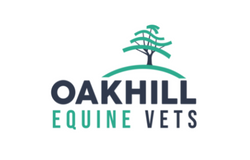Articles
Stay informed with our topical articles, all written by our equine vets.Equine Standing MRI – what to expect
What to expect when your horse has a standing MRI. Using the right tools early in the lameness process to get a definitive diagnosis will allow you and your vet to devise the right treatment plan, hopefully getting your horse back to full fitness as quickly as possible. The clear images from MRI allow vets […]
Read MoreWhy MRI?
Our equine clinic has the most technologically advanced standing MRI machine available, used for both clients and those referred from other veterinary practices. Often during a lameness work-up, your vet will use ‘nerve blocks’ to locate where the pain is coming from. This may then be followed with X-ray or ultrasound examinations, but because these […]
Read MoreMission Christmas Gift Appeal
Once again Oakhill Veterinary Centre will be taking part in Rock FM’s Mission Christmas Gift Appeal 2019, in aid of Cash for Kids, who make sure Christmas gifts get to disadvantaged children in the area. All 4 of our branches will be gift collection points. If you’d like to donate a gift, it should be […]
Read MoreKeeping your horse safe on Bonfire Night
Bonfire Night can be stressful for both horses and horse owners. The calmest of horses can become frightened by the unfamiliar loud noises and flashes of bright light. There are some things you can do to prepare…. Find out when and where the firework displays will be in your area. You could look in local […]
Read MorePetPlan Veterinary Awards 2020
The PetPlan Veterinary Awards 2020 are now open! 2020 marks an amazing 21 years of these awards celebrating excellence within the veterinary industry. The Petplan Veterinary Awards recognise the fantastic work that goes on in veterinary practices across the UK. Petplan has worked closely with the veterinary profession for over 40 years and hosts these […]
Read MoreAtypical Myopathy
Atypical Myopathy is a very serious and often fatal disease that horses can get when out at pasture from consuming sycamore seeds. What is Atypical Myopathy? An acute, severe rhabdomyolysis (a severe form of azoturia / tying up) that occurs independently of exercise. The disease causes extreme muscle cramping and often irreparable muscle damage. Muscle enzymes that are […]
Read More